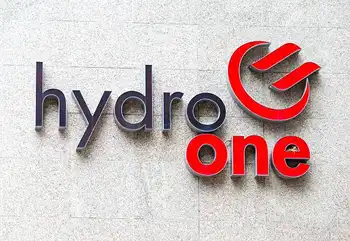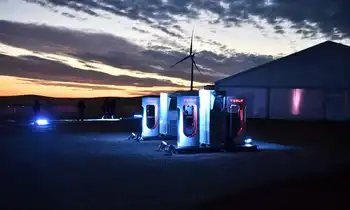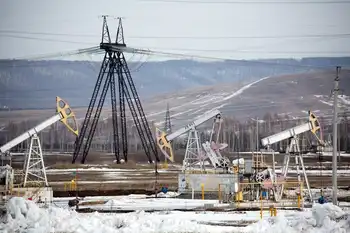Tidal power projects move forward
By Peterborough Examiner
Protective Relay Training - Basic
Our customized live online or in‑person group training can be delivered to your staff at your location.

- Live Online
- 12 hours Instructor-led
- Group Training Available
Far from discouraged, Ocean Renewable Power Co. is spending the summer preparing to deploy larger turbines capable of producing up to five megawatts, enough electricity to power 5,000 houses.
Eventually, the company envisions producing enough electricity to power 22,000 homes by harnessing the power of Passamaquoddy Bay, where twice each day the tide rises and falls upward of six metres, the greatest tide change in the continental United States.
"This is our beachhead opportunity to enter the market," project manager John Ferland said.
Even before energy prices surged, a study conducted by the electric utility industry concluded that tidal power could be produced at a cost competitive with wind power and power plants fired by natural gas.
Companies raced to file permits with the Federal Energy Regulation Commission, but Ocean Renewable Power has moved a step forward by using its turbine generating unit to produce power. It is one of dozens of developers positioning for a lead role in tidal power technology.
"Basically, the technology is here. It's just a matter of engineering it for the lowest cost, the highest reliability and the longest survivability in a hostile and corrosive environment," said Roger Bedard, who led the study for the Electric Power Research Institute in Palo Alto, Calif.
The experiment taking place in the 37-metre-deep Western Passage represents the latest advance in an emerging technology that seems to be moving forward in baby steps, but could one day help meet the growing worldwide demand for electricity.
Ocean Renewable Power was the only developer with turbines in U. S. waters that generated electricity this year, Bedard said. He said tests are also being run elsewhere, including the British Isles, Canada and Italy.
As the nation seeks to wean itself from foreign oil and curb global warming, alternative energy sources such as wind, solar and geothermal are becoming more attractive.
Tides hold a number of advantages. Winds can turn calm and clouds can obscure the sun but the immutable tides turn twice a day, no matter what, providing a steady and predictable source of power.
Because of water's greater density, the technology requires fewer turbines to produce the same amount of electricity as wind. Underwater turbines also are unlikely to draw complaints about spoiled views or disrupted tranquility from coastal residents.
But tidal power still has a long row to hoe. Bedard figures that tidal is more than 15 years behind wind, which today has an installed capacity of 80,000 megawatts worldwide.
Eastport was the site of a previous effort to harness the region's powerful tides, back when Franklin Roosevelt was president and America was mired in the Depression.
Down the block from Ocean Renewable Power's office and across from the tall wooden pilings that expose the magnitude of Eastport's tides, a museum on Water Street features a scale model of the last effort.
Bob Lewis helped to restore the model, which was built by the Army Corps of Engineers to pinpoint the location of the huge dams and impoundments that were part of Roosevelt's Passamaquoddy Bay Tidal Power Project.
"It helps put what we're doing in perspective," said Lewis, a military retiree who now supervises Ocean Renewable Power's onsite operations.
Systems under development today rely on tidal stream turbines that are powered by current flows, just as windmills are spun by moving air.
Known as tidal in-stream or hydrokinetics, the process is a far cry from old-style tidal barrages that are more akin to dams and cost much more to build. The best-known plant of that type, built on France's Rance estuary, has been producing power for more than 40 years.
Ocean Renewable Power tested its prototype with different types of blades for much of the past winter in the frigid waters of Deep Cove. The tests were done aboard the barge Energy Tide 1, which is equipped with devices to measure turbine speed, tidal flow rate, voltage and electrical current.
A bigger test came in April, when the barge was towed to the Western Passage between Eastport and Canada's Deer Island, where it generated electricity for the first time. While the output was modest, the purpose was to demonstrate the feasibility of the turbine generator unit and Ferland said it passed that test with flying colours.
The commercial model would be roughly three times the size of the prototype and be placed in the water for testing as early as next year. By 2011, if all goes well, output could expand to five megawatts. Ocean Renewable Power's long-term goal is an array of turbines that would generate 80 to 120 megawatts.
Only a handful of sites in the lower 48 states lend themselves to utility scale tidal generation, according to Bedard, including Eastport and a few areas along Washington's Puget Sound. Alaska, he said, has 95 per cent of U. S. tidal resources and Canada also has huge potential, but the challenge lies in transmitting that power to markets where it is needed.
While Passamaquoddy Bay and the Bay of Fundy in the U. S. and Canada are prime proving grounds for tidal power, tests are also being run at other sites. The largest, a 1.2 megawatt generator, was deployed this year by Marine Current Turbines at Strangford Narrows in Northern Ireland.
Another developer, Verdant Power, placed turbines in New York's East River last year to test delivery of tidal power to a local supermarket and parking garage. The test was a success but the project experienced problems with broken blades and has since installed new ones. Another urban site being explored is beneath San Francisco's Golden Gate Bridge.
In Maine, Portland-based Ocean Renewable Power is looking to generate revenue in three ways. It can provide its technology to other permit holders, generate power at its own sites, and take on the role of project developer for others who enter the market.
Because the technology is still in its infancy, techniques for building and deploying turbines are still being shaped.
"What we're doing is not in the shop manual," Lewis said. "We're writing the shop manual."











